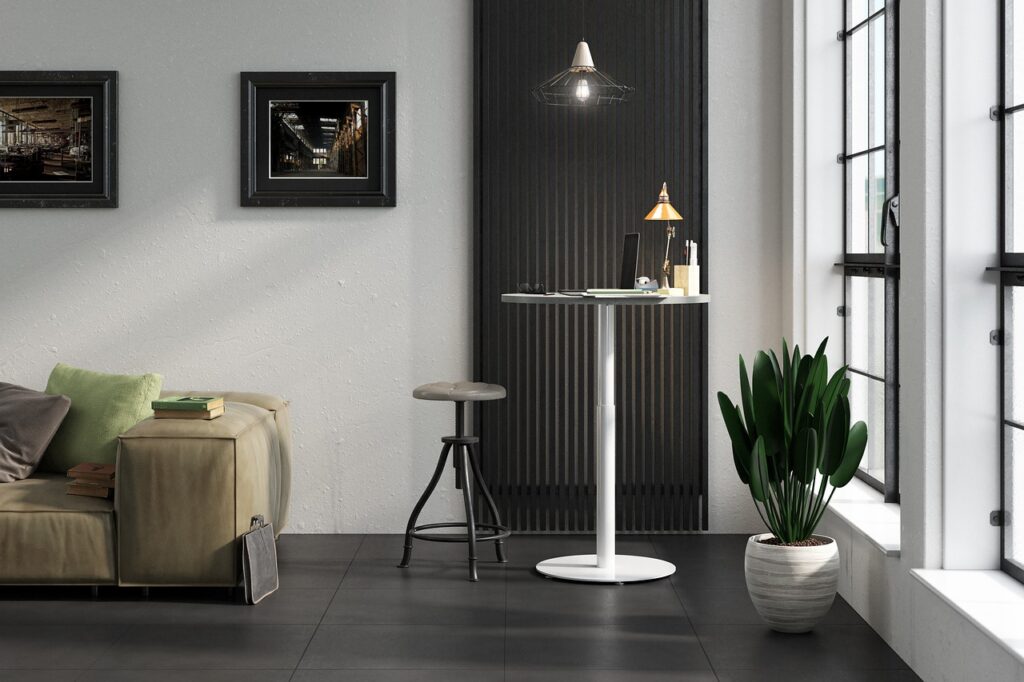The traditional office cubicle farm is a relic of the past. Today’s workplaces are dynamic ecosystems, constantly evolving to meet the needs of a changing workforce. Interior design for office space is no longer an afterthought; it’s a strategic tool used to create environments that foster collaboration, innovation, and employee well-being. Let’s delve into the exciting trends that are reshaping the future of work through interior design for office space:
1. Activity-Based Working: A Space for Every Task
One-size-fits-all is out. Interior design for office space now caters to diverse work styles and activities. Imagine a space offering a variety of zones:
- Focus pods: Soundproofed nooks for deep concentration, equipped with noise-canceling features for maximum productivity.
- Collaboration hubs: Open areas with interactive whiteboards, comfortable seating, and movable furniture to facilitate brainstorming sessions and team meetings.
- Social lounges: Inviting spaces with game tables, relaxation areas, and comfortable seating to encourage informal conversations and idea sharing.
This flexibility empowers employees to choose the environment that best suits their needs, boosting productivity, creativity, and a sense of ownership over their work.
2. Biophilia: Nature’s Embrace for a Healthier Workspace
The connection between humans and nature is undeniable. Studies show that incorporating natural elements into the workspace significantly improves employee well-being and focus. Interior design for office space is embracing biophilic design principles:
- Living walls and strategically placed plants: Lush greenery purifies the air, reduces stress, and adds a vibrant touch, improving overall well-being.
- Natural materials: Wood, stone, and other organic elements create a sense of tranquility, promote a connection with the outdoors, and contribute to a calming aesthetic.
- Maximized natural light and ventilation: Prioritizing natural light sources and incorporating fresh air circulation creates a more natural circadian rhythm, boosting alertness and promoting overall health.
3. Seamless Tech Integration: The Smart and Connected Office
Technology is the lifeblood of the modern office. Interior design for office space needs to seamlessly integrate features like:
- Wireless charging surfaces: Convenient solutions to keep devices powered up throughout the day, eliminating cord clutter and promoting a clean workspace.
- Smart building systems: Automated systems that adjust lighting, temperature, and ventilation based on occupancy and preferences, optimizing energy efficiency and user comfort.
- Voice-controlled interfaces: Hands-free technology for controlling room functions and accessing information, improving accessibility and efficiency for a truly smart work environment.
4. Prioritizing Employee Well-being: A Space that Cares
Employee well-being is no longer a fringe benefit; it’s a core element for attracting and retaining top talent. Interior design for office incorporates features that promote health and well-being, such as:
- Ergonomic furniture: Investing in comfortable, adjustable chairs and desks to minimize fatigue, promote good posture, and prevent musculoskeletal issues.
- Dedicated wellness areas: Break rooms with healthy snacks, meditation spaces, and even fitness areas encourage relaxation, mindfulness, and healthy habits.
- Focus on mental health: Design elements like designated quiet spaces and access to natural light contribute to a calmer work environment, reducing stress and promoting mental well-being.
5. Cultivating Community: A Home Away from Home
The modern office is often described as a “second home.” Interior design for office can create a sense of community and belonging by incorporating:
- Comfortable lounge areas: Inviting spaces with plush seating, soft lighting, and warm colors for informal conversations, idea sharing, and building relationships.
- Personal touches: Allowing employees to personalize their workspace to a certain degree fosters a sense of ownership, comfort, and individuality within the overall design scheme.
- Collaborative kitchens: Well-equipped kitchens with comfortable seating areas encourage employees to socialize and connect over shared meals, fostering a sense of community and team spirit.
Conclusion: A Space Designed to Inspire
Interior design for office space is more than just aesthetics; it’s a strategic investment in the future of your company. By embracing these trends and collaborating with skilled designers, you can create a space that inspires creativity, fosters collaboration, prioritizes employee well-being, and ultimately fuels the success of your organization. Remember, a well-designed office space is a living, breathing ecosystem that reflects your company’s values and empowers your people to thrive.





